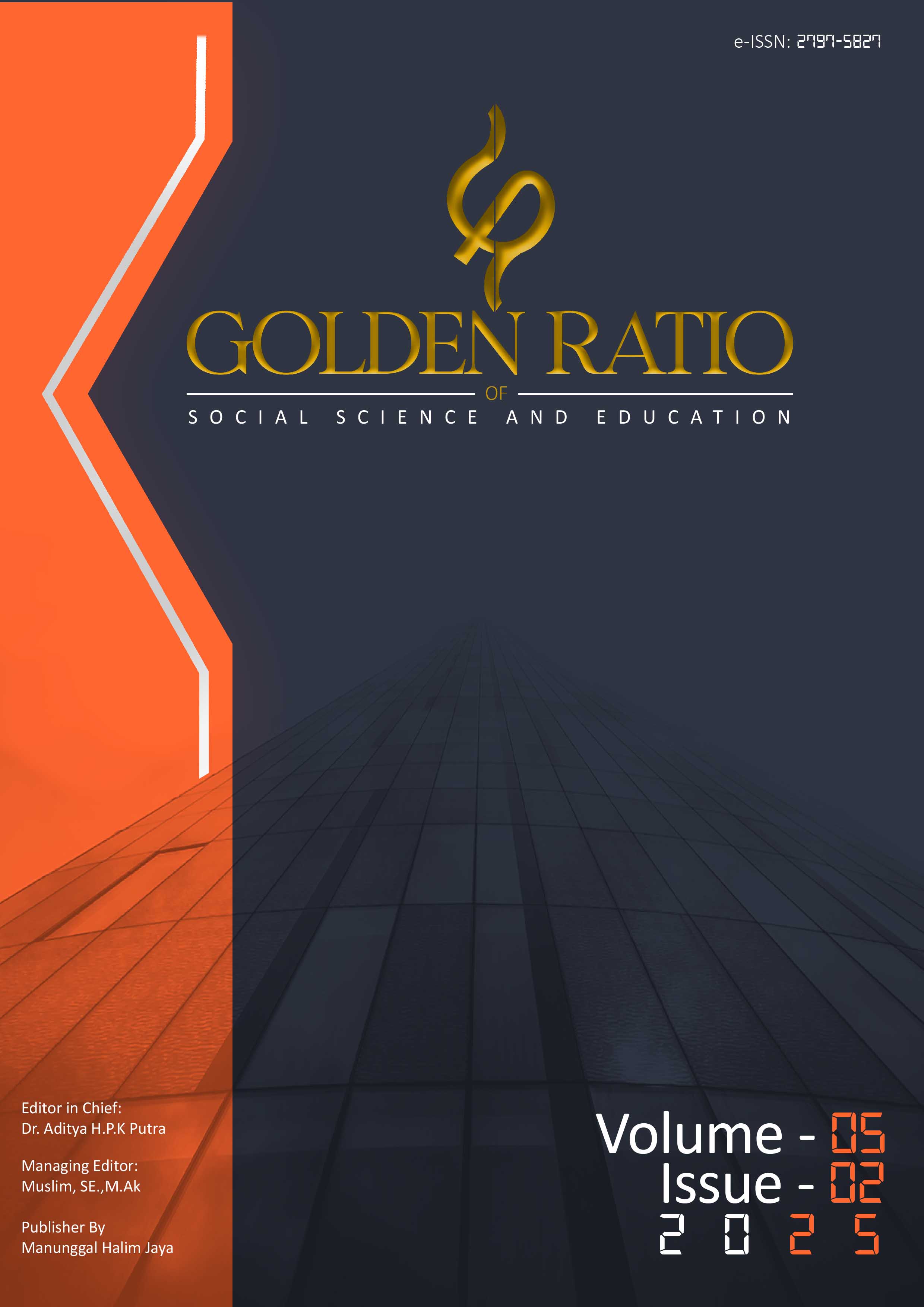Main Article Content
Abstract
The global halal industry continues to grow rapidly and is projected to reach more than USD 3 trillion by 2027. Indonesia, with the largest Muslim population in the world, has great potential to become a major producer and exporter of halal products. However, Indonesia's contribution to halal exports is still relatively small, only about 3% of global trade, lagging behind Malaysia, Thailand, and Brazil. Russia, as a non-Muslim country with a significant Muslim population (20–25 million people), is showing increasing demand for halal products, including food, cosmetics, pharmaceuticals, and modest fashion. This trend is driven by the growth of halal lifestyles and the adoption of halal products by non-Muslim Russian consumers who view halal products as symbols of quality and safety. This study aims to identify obstacles and formulate strategies to increase Indonesia's halal product exports to Russia. The method used is qualitative descriptive with secondary data from government agency reports, international organisations, and academic publications. The results of the study show that the main obstacles to exports include differences in halal regulations, logistical and distribution limitations, lack of promotion and branding, and limitations in the capacity of MSMEs. The recommended strategies include product innovation and differentiation tailored to Russian consumer preferences, harmonisation of halal certification, digitalisation of promotion, strengthening of the halal value chain, bilateral economic diplomacy, and empowerment of halal SME exporters.
Keywords
Article Details

This work is licensed under a Creative Commons Attribution-ShareAlike 4.0 International License.
References
- Agustina, S., Rahman, A., & Nurhadi, M. (2024). Opportunities, challenges, and strategies of the halal industry. Journal of Halal Studies, 6(2), 112–125.
- Barney, J. (1991). Firm resources and sustained competitive advantage. Journal of Management, 17(1), 99–120. https://doi.org/10.1177/014920639101700108
- Bayne, N., & Woolcock, S. (2011). The new economic diplomacy: Decision-making and negotiation in international economic relations (3rd ed.). Ashgate.
- Belkhatir, N., Ahmed, R., & Kachani, S. (2020). Business process re-engineering in supply chains: Enhancing quality and traceability. International Journal of Supply Chain Management, 9(5), 22–34.
- Cavusgil, S. T., Knight, G., Riesenberger, J. R., Rammal, H. G., & Rose, E. L. (2014). International business. Pearson Higher Education AU.
- Creswell, J. W. (2014). Research design: Qualitative, quantitative, and mixed methods approaches (4th ed.). SAGE Publications.
- Haryono, T. (2023). Strategy for halal industry development in Indonesia. Journal of Islamic Economic Studies, 11(1), 77–89.
- Hendra, N., & Fauziah, R. (2023). The role and strategy of halal certification in export markets. Journal of Halal Industry and Services, 5(1), 55–70. https://doi.org/10.21580/jhis.2023.5.1
- Krugman, P. R., & Obstfeld, M. (2009). International economics: Theory and policy (8th ed.). Pearson.
- KNEKS. (2021). Halal export acceleration strategy for SMEs. Komite Nasional Ekonomi dan Keuangan Syariah.
- Lada, S., Tanakinjal, G. H., & Amin, H. (2009). Predicting intention to choose halal products using the theory of reasoned action. International Journal of Islamic and Middle Eastern Finance and Management, 2(1), 66–76. https://doi.org/10.1108/17538390910946276
- Lukyanova, T., & Zeynalov, M. (2022). The Russian agricultural industry is under sanction wars. Russian Journal of Economics, 8(3), 217–229. https://doi.org/10.32609/rje.8.3.217
- Moenardy, D. (2021). West Java trade diplomacy is increasing exports of micro, small, and medium enterprises (MSMEs) in the COVID-19 pandemic. Review of International Geographical Education (RIGEO), 11(6), 221–229.
- Prahalad, C. K., & Hamel, G. (1990). The core competence of the corporation. Harvard Business Review, 68(3), 79–91.
- Salvatore, D. (2013). International economics (11th ed.). Wiley.
- Usnan, F., & Aisy, N. (2022). Problematics and optimization strategies of halal certification. Journal of Islamic Business and Economics, 4(2), 145–160.
References
Agustina, S., Rahman, A., & Nurhadi, M. (2024). Opportunities, challenges, and strategies of the halal industry. Journal of Halal Studies, 6(2), 112–125.
Barney, J. (1991). Firm resources and sustained competitive advantage. Journal of Management, 17(1), 99–120. https://doi.org/10.1177/014920639101700108
Bayne, N., & Woolcock, S. (2011). The new economic diplomacy: Decision-making and negotiation in international economic relations (3rd ed.). Ashgate.
Belkhatir, N., Ahmed, R., & Kachani, S. (2020). Business process re-engineering in supply chains: Enhancing quality and traceability. International Journal of Supply Chain Management, 9(5), 22–34.
Cavusgil, S. T., Knight, G., Riesenberger, J. R., Rammal, H. G., & Rose, E. L. (2014). International business. Pearson Higher Education AU.
Creswell, J. W. (2014). Research design: Qualitative, quantitative, and mixed methods approaches (4th ed.). SAGE Publications.
Haryono, T. (2023). Strategy for halal industry development in Indonesia. Journal of Islamic Economic Studies, 11(1), 77–89.
Hendra, N., & Fauziah, R. (2023). The role and strategy of halal certification in export markets. Journal of Halal Industry and Services, 5(1), 55–70. https://doi.org/10.21580/jhis.2023.5.1
Krugman, P. R., & Obstfeld, M. (2009). International economics: Theory and policy (8th ed.). Pearson.
KNEKS. (2021). Halal export acceleration strategy for SMEs. Komite Nasional Ekonomi dan Keuangan Syariah.
Lada, S., Tanakinjal, G. H., & Amin, H. (2009). Predicting intention to choose halal products using the theory of reasoned action. International Journal of Islamic and Middle Eastern Finance and Management, 2(1), 66–76. https://doi.org/10.1108/17538390910946276
Lukyanova, T., & Zeynalov, M. (2022). The Russian agricultural industry is under sanction wars. Russian Journal of Economics, 8(3), 217–229. https://doi.org/10.32609/rje.8.3.217
Moenardy, D. (2021). West Java trade diplomacy is increasing exports of micro, small, and medium enterprises (MSMEs) in the COVID-19 pandemic. Review of International Geographical Education (RIGEO), 11(6), 221–229.
Prahalad, C. K., & Hamel, G. (1990). The core competence of the corporation. Harvard Business Review, 68(3), 79–91.
Salvatore, D. (2013). International economics (11th ed.). Wiley.
Usnan, F., & Aisy, N. (2022). Problematics and optimization strategies of halal certification. Journal of Islamic Business and Economics, 4(2), 145–160.
